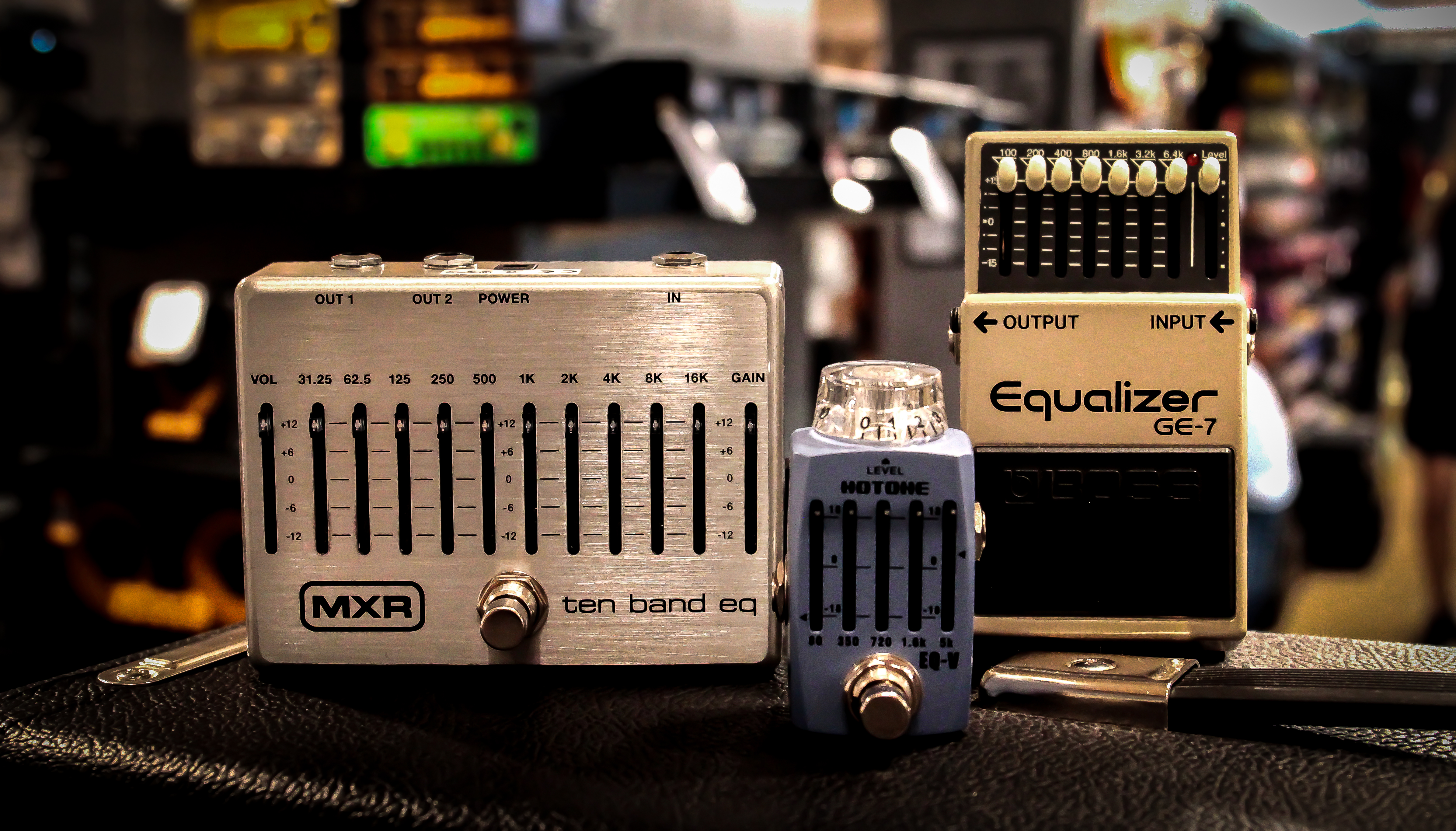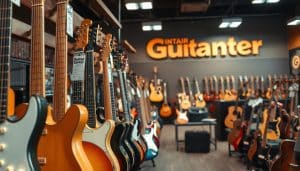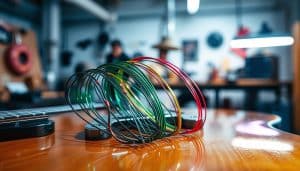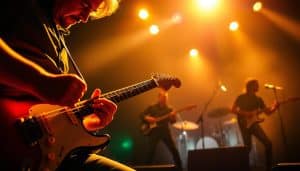Whether you’re a professional musician or just starting out, finding the perfect guitar EQ pedal can be a daunting task. With so many options available on the market, it’s important to understand what factors to consider when making your choice. From tone shaping to compatibility with your existing gear, this guide will walk you through everything you need to know in order to find the best guitar EQ pedal for your needs. So grab your guitar and get ready to take your sound to the next level!

Understanding Guitar EQ
What is EQ?
EQ, short for equalization, is a powerful tool that allows you to shape and manipulate the frequencies of your guitar’s sound. It allows you to boost or cut specific frequency bands, allowing you to dial in the perfect tone for your playing style and musical genre.
How Does EQ Work?
EQ works by dividing the audio signal into different frequency bands and then adjusting the level of each band individually. This enables you to enhance certain frequencies or reduce unwanted ones, giving you precise control over your guitar’s tone. By using EQ effectively, you can shape and tailor your sound to fit any musical situation.
Why Use an EQ Pedal?
An EQ pedal is an essential tool for any guitarist looking to improve their tone or overcome specific sonic challenges. Whether you want to boost your guitar’s presence in a mix, tame harsh frequencies, or add warmth to your sound, an EQ pedal can help you achieve the desired result. It can also be used to compensate for the shortcomings of your guitar, amp, or other pedals in your signal chain.
Types of EQ Pedals
Graphic EQ Pedals
Graphic EQ pedals are one of the most common types of EQ pedals you’ll come across. They typically feature a row of faders or sliders, each representing a specific frequency band. By moving these sliders up or down, you can increase or decrease the level of that frequency, allowing for precise control over your guitar’s tone.
Parametric EQ Pedals
Parametric EQ pedals offer even more flexibility than graphic EQ pedals. Instead of fixed frequency bands, parametric EQ pedals allow you to adjust the center frequency, bandwidth, and gain of each band. This level of control is particularly useful for guitarists who want to fine-tune their tone and have a more surgical approach to EQ.
Fixed Band EQ Pedals
Fixed band EQ pedals are simplified versions of graphic or parametric EQ pedals. They typically offer a limited number of frequency bands and fixed EQ curves. While they may lack the versatility of other EQ pedals, they can still be useful in situations where simplicity and ease of use are prioritized.
Semi-Parametric EQ Pedals
Semi-parametric EQ pedals combine elements of graphic and parametric EQs. They offer a fixed number of frequency bands like graphic EQs but allow you to adjust the center frequency and gain of each band like parametric EQs. This makes them a versatile option for guitarists who want more control over their tone without the complexity of a fully parametric EQ.

Factors to Consider Before Buying
Budget
The first factor to consider when looking for a guitar EQ pedal is your budget. EQ pedals vary widely in price, with some budget-friendly options offering great value for money and higher-end models providing advanced features and superior build quality. Determine your budget range and look for options that fall within it.
Sound Preference
Consider the sound you’re trying to achieve and how an EQ pedal can help you get there. Are you looking to shape your tone subtly or drastically change it? Do you prefer clean and transparent EQ or something with more character? Different EQ pedals have different sonic characteristics, so it’s important to choose one that aligns with your sound preference.
Pedalboard Space
Another important factor to consider is the available space on your pedalboard. EQ pedals come in various shapes and sizes, and you’ll need to make sure it fits alongside your existing pedals. Some EQ pedals are larger and take up more real estate, so be mindful of this when making your decision.
Compatibility with Other Pedals
If you already have a pedalboard setup, make sure the EQ pedal you choose is compatible with your existing pedals. Some EQ pedals interact with other pedals in the signal chain differently, which can lead to undesirable results. Research compatibility and check user reviews to ensure smooth integration with your setup.
Features to Look for in a Guitar EQ Pedal
Number of Bands
The number of bands in an EQ pedal determines the level of control you have over your tone. Graphic EQ pedals typically have multiple bands, allowing for more precise adjustments across a wider range of frequencies. On the other hand, fixed band EQ pedals have fewer bands but can still provide sufficient control for most guitarists.
Boost/Cut Range
The boost/cut range refers to the maximum amount of increase or decrease in level that each EQ band provides. This range can vary between EQ pedals, so it’s important to consider how much control you need over each frequency. If you want to make subtle adjustments, a pedal with a narrower range may suffice. However, if you want to make more drastic tonal changes, look for a pedal with a wider boost/cut range.
Bypass Options
Bypass options determine how the EQ pedal affects your guitar’s signal when it’s not engaged. Most EQ pedals offer true bypass, where the signal passes through unaffected when the pedal is turned off. Others may provide buffered bypass, which can help preserve your guitar’s tone over longer cable runs. Consider your preference and the potential impact on your signal chain when choosing an EQ pedal with the right bypass option for you.
Buffered or True Bypass
Power Supply Options
Some EQ pedals can be powered using a standard 9V battery, while others require an external power supply. Consider your power supply options and choose a pedal that aligns with your setup. If you have limited access to power outlets on stage, a battery-powered EQ pedal may be more convenient. However, if you already have a dedicated power supply for your pedalboard, an external power supply option would be suitable.
Top Brands of Guitar EQ Pedals
Boss
Boss is a renowned brand in the guitar effects pedal industry, known for producing high-quality and reliable pedals. Their EQ pedals, such as the Boss GE-7 Graphic Equalizer, are widely used by musicians worldwide. Boss EQ pedals offer great sound shaping capabilities and rugged construction, making them a popular choice among guitarists of all genres.
MXR
MXR is another respected brand in the world of guitar effects pedals, and their EQ pedals are known for their simplicity and effectiveness. The MXR M108S Ten Band EQ, in particular, offers precise control over your tone with ten carefully chosen frequency bands. MXR pedals are built to last and are favored by many professional guitarists.
Digitech
Digitech is known for their innovative approach to guitar effects pedals, and their EQ pedals are no exception. The Digitech EQ Effects Pedal combines a graphic EQ with a noise gate, allowing you to sculpt your tone and eliminate unwanted noise simultaneously. Digitech pedals offer great value for money and are a fantastic option for guitarists on a budget.
TC Electronic
TC Electronic is a brand that is highly respected for their cutting-edge technology and premium quality pedals. Their EQ pedals, such as the TC Electronic EQ Guitar Effects Pedal, offer studio-grade sound shaping capabilities in a compact and intuitive design. With a focus on sonic precision, TC Electronic EQ pedals are a top choice for professional and demanding guitarists.
Reviewing the Best Guitar EQ Pedals
Pedal 1: Boss GE-7 Graphic Equalizer
The Boss GE-7 Graphic Equalizer is a classic and versatile EQ pedal that offers seven bands for tonal control. It is known for its robust construction and reliability, making it a staple on many pedalboards. The GE-7 allows for precise adjustments and can be used to shape your tone or boost specific frequency ranges. Whether you need to cut through the mix or attain a smooth and balanced sound, the Boss GE-7 is a go-to option for many guitarists.
Pedal 2: MXR M108S Ten Band EQ
The MXR M108S Ten Band EQ is a professional-grade EQ pedal that provides exceptional precision and tonal control. With ten carefully selected frequency bands, it allows for highly detailed adjustments to your guitar’s tone. The MXR M108S features a bright LED display to indicate the EQ settings, making it easy to dial in the desired sound. Its rugged metal construction ensures durability and reliability, making it suitable for the rigors of the stage and studio.
Pedal 3: Digitech EQ Effects Pedal
The Digitech EQ Effects Pedal offers a unique combination of a graphic EQ and noise gate in one unit. This pedal allows for precise tonal shaping, while the built-in noise gate helps eliminate unwanted background noise. With seven adjustable frequency bands, guitarists can sculpt their tone precisely to their liking. The Digitech EQ Effects Pedal provides excellent value for money and is a great option for musicians looking for both EQ control and noise reduction in one compact package.
Pedal 4: TC Electronic EQ Guitar Effects Pedal
The TC Electronic EQ Guitar Effects Pedal is a high-quality EQ pedal offering studio-grade sound shaping capabilities. Featuring multiple frequency bands and extensive boost/cut range, this pedal allows for precise and detailed control over your guitar’s tone. With both stereo inputs and outputs, the TC Electronic EQ pedal is suitable for use in mono or stereo setups. Its compact design and robust construction make it well-suited for both live performances and recording applications.

Setting Up and Dialing In Your Guitar EQ Pedal
Understanding Frequency Bands
To effectively use an EQ pedal, it’s important to understand frequency bands and their impact on your guitar’s tone. Low-frequency bands, such as 100Hz, can add weight and depth to your sound, while high-frequency bands, like 10kHz, can provide clarity and brilliance. Experimenting with different frequency bands will help you find the sweet spot for your desired tone.
Amp-EQ-Pedal Chain
The placement of your EQ pedal in your signal chain can have a significant impact on your overall tone. For most guitarists, placing the EQ pedal after the amplifier in the chain is the most common setup. This allows you to shape the tone coming from your amplifier, giving you greater control over the final sound. However, you can also experiment with placing the EQ pedal before the amplifier or even in the effects loop to achieve different sonic results.
Experimentation and Fine-Tuning
Finding your perfect tone with an EQ pedal requires experimentation and fine-tuning. Start with a flat EQ setting and add or cut frequencies gradually to achieve the desired sound. Pay attention to how each adjustment affects the overall tone and make subtle changes until you find the perfect balance. Don’t be afraid to try different settings and combinations to discover new and unique tones that suit your playing style and musical genre.
Common EQ Pedal Techniques for Different Genres
Blues and Jazz
For blues and jazz guitarists, EQ pedals are often used to enhance the warm and smooth characteristics of their tone. Boosting the mid-range frequencies can bring out the natural “bite” of the guitar, while taming the high frequencies can provide a more rounded and mellow sound. Experiment with subtle boosts and cuts to find a tone that complements the genre’s expressive playing style.
Rock and Metal
Rock and metal guitarists often rely on EQ pedals to achieve a tight and aggressive tone. Boosting the low end can add weight and punch to heavy distortion, while cutting the high frequencies can help tame any unwanted shrillness. Additionally, a slight boost in the mid-range frequencies can provide more clarity and cut through the mix. Experiment with different EQ settings to find the perfect balance between heaviness and definition.
Country and Folk
Country and folk guitarists typically strive for a balanced and transparent tone that complements their fingerpicking or strumming techniques. A slight boost in the high frequencies can add sparkle and clarity to acoustic guitars, while a gentle compression can smooth out the dynamics. Additionally, a slight cut in the low-mids can help reduce boominess and muddiness. Focus on enhancing the natural characteristics of your acoustic guitar while maintaining clarity and warmth.
Acoustic and Fingerstyle
For acoustic and fingerstyle guitarists, an EQ pedal can help shape the tone and bring out the unique qualities of their instruments. Boosting the mid-range frequencies can add warmth and presence, while cutting the low frequencies can reduce muddiness. Experiment with different EQ settings to find a balance that enhances the natural resonance and articulation of your acoustic and fingerstyle playing.

Troubleshooting EQ Pedal Issues
Noisy Pedal
If your EQ pedal introduces unwanted noise into your signal chain, there are a few steps you can take to address the issue. First, make sure all connections are secure and free from interference. Sometimes, using an isolated power supply can help reduce noise. If the noise persists, try placing your EQ pedal in a different location in your signal chain. Experiment with different combinations until you find a setup that minimizes noise.
Inconsistent Tonal Response
If your EQ pedal is not providing consistent tonal response across different frequency bands, it may be a sign of a faulty pedal. Check all connections and ensure that the pedal is functioning properly. If the issue persists, it may be necessary to have the pedal serviced or replaced.
Negative Interaction with Other Pedals
Sometimes, an EQ pedal may interact negatively with other pedals in your signal chain, resulting in undesirable frequencies or increased noise. Experiment with different pedal orders and bypass options to find a setup that minimizes these interactions. If necessary, consider using an EQ pedal with a buffered bypass to help maintain signal integrity and minimize unwanted interactions.
Maintaining and Caring for Your Guitar EQ Pedal
Cleaning and Dusting
Regular cleaning and dusting of your EQ pedal is essential to keep it in optimal condition. Use a soft cloth or a brush to remove any dust or debris from the pedal’s surface and knobs. Be gentle during the cleaning process to avoid damaging any delicate components. Avoid using harsh cleaning agents or solvents, as they can negatively affect the pedal’s finish.
Avoiding Extreme Temperatures
Extreme temperatures can have a harmful effect on the components inside your EQ pedal. Avoid exposing it to direct sunlight, extreme heat, or extreme cold for extended periods. If you need to transport your EQ pedal in extreme weather conditions, consider using a padded case or bag to provide additional protection.
Proper Storage and Handling
When not in use, it’s important to store your EQ pedal in a safe and secure manner. A pedalboard case or padded bag can help protect it from scratches, dings, and other physical damage. Avoid placing heavy objects on top of your pedal or storing it in a cluttered space where it may be accidentally dropped or knocked over.
By following these maintenance and care guidelines, you can extend the lifespan of your EQ pedal and ensure that it continues to perform at its best for years to come.
In conclusion, a guitar EQ pedal is a powerful tool that can greatly enhance your playing experience and allow for precise tonal control. By understanding the different types of EQ pedals, considering important factors before buying, and choosing a reputable brand, you can find the best guitar EQ pedal for your needs. Experimenting with EQ settings and techniques for different genres will help you achieve your desired guitar tone. With proper care and maintenance, your EQ pedal will continue to serve you faithfully and bring your guitar playing to new heights.







